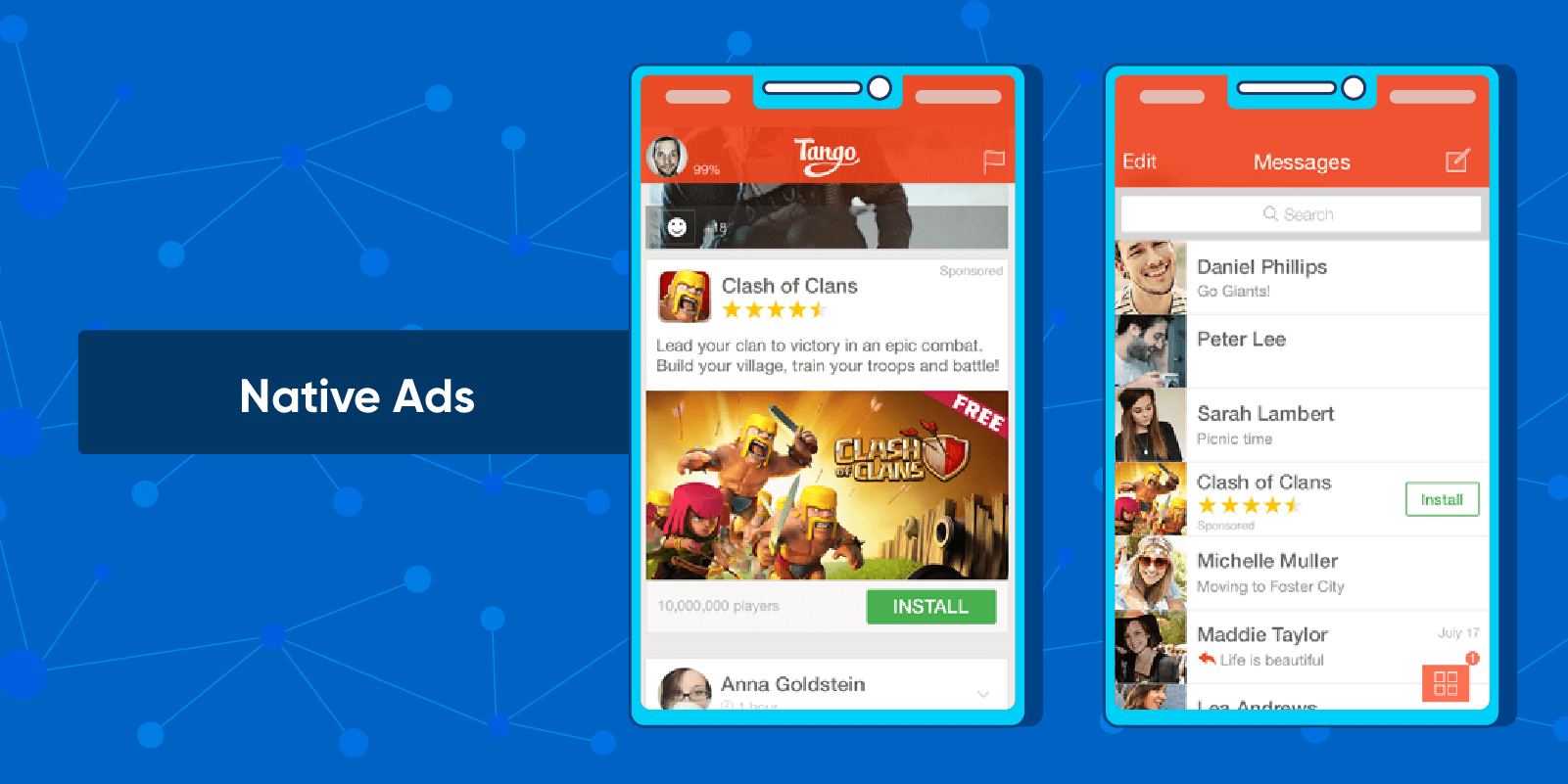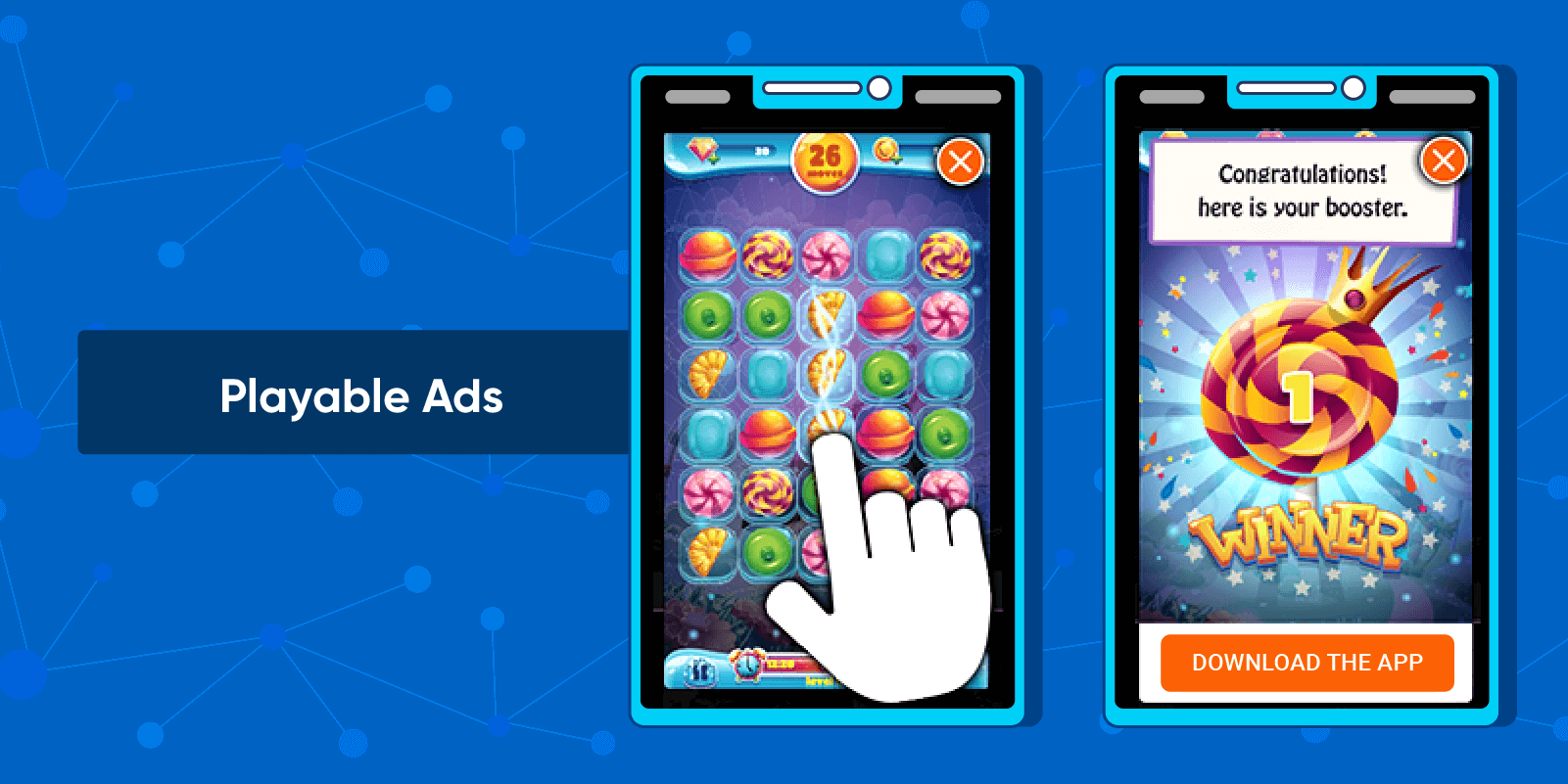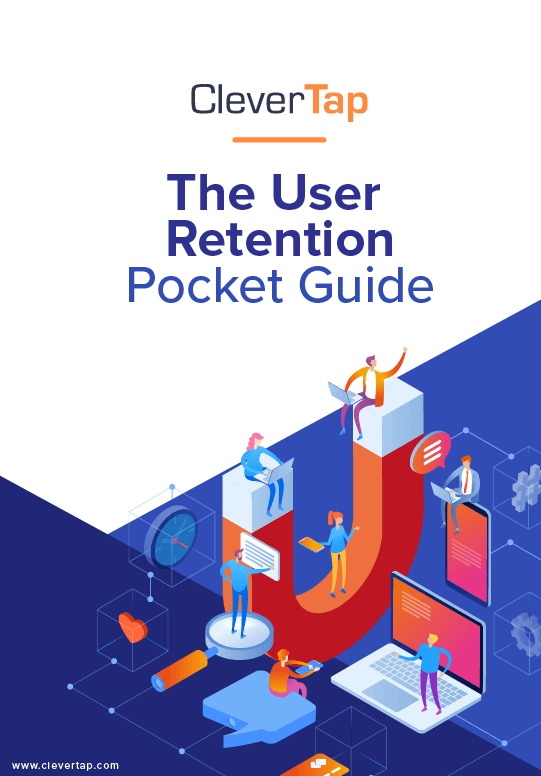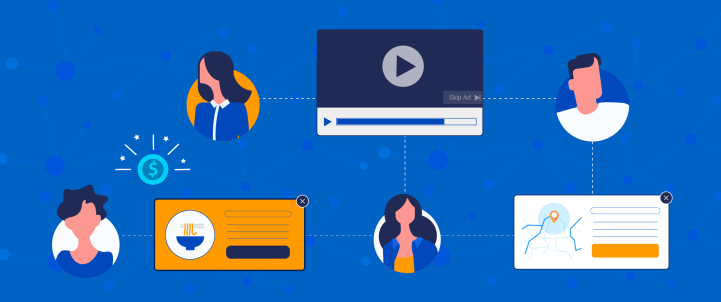If you want to capture your customers’ attention, you’ve got to be where they are. And that’s on mobile.
Mobile ad viewers don’t have to switch devices in order to learn about, install, and use your app, which is part of what makes mobile advertising so effective: over 40% of online transactions are made on a mobile device.* And after seeing a relevant ad, 91% of smartphone users make or plan to make a purchase.*
Given the turbulent economy, you may be thinking about giving your mobile brand a lifeline by running some paid acquisition campaigns. But the last thing you want to do is lose precious budget on ineffective campaigns or fraudulent ad traffic.
In this article, we’ll cover the essentials of mobile advertising, including types of mobile ads, ad network integration, and the top mobile ad networks, so you can get the best ROI on your efforts.
What Are Mobile Ad Networks?
Mobile ad networks are marketplaces where app developers (publishers) can sell ad space to marketers (advertisers). Mobile ad networks help developers sell ad space to monetize their apps, and they help marketers purchase ad space to ramp up user acquisition.
Mobile Ad Publishers
As an ad publisher, you’re looking to monetize your app by allowing advertisers to place ads within your app. Publishers use a mobile ad network called a supply-side platform (SSP). They’re most interested in maximizing CPM, or cost per mille, which represents the estimated revenue generated by 1,000 ad impressions.
With CPM-based mobile ad networks, an advertiser is charged each time their ads are shown 1,000 times. Publishers like this model because it allows them to make money every time an ad is displayed, and it’s a stable, predictable revenue stream.
Compare that with a CPC (cost-per-click) model, where an advertiser is only charged when a customer clicks on the mobile ad. Advertisers like this model because they pay only when customers display an interest in their product or service.
Mobile Advertisers
As a mobile advertiser, you’re using a Demand Side Platform (DSP) to find ad space within other apps for your acquisition campaigns.
Most marketers are looking to optimize return on ad spend, or the amount of revenue generated by the campaign divided by the amount of money spent to produce and execute the campaign.
What is Ad Network Integration?
Developers looking to monetize their app through advertising can integrate ad networks into their apps.
Here’s how it works: each ad network is an SDK integration that connects developers (or publishers) with advertisers. The network aggregates ad inventory from all the apps it’s integrated with, and then sells that inventory to advertisers.
Mobile Mediation platforms are built to help ad publishers by allowing them to access multiple ad networks with a single SDK. So instead of searching through every mobile ad network to find ad placements, you plug in the criteria and the software determines the network that can provide you the best CPM.
What Are the Best Mobile Ad Networks?
What makes a good mobile ad network? The best ensure fair rates, high CPMs, audience targeting, quality graphics, and more.
Choosing the right mobile ad network depends on your goals and your brand. Different networks have larger audiences in different regions, so make sure you look for a network that can provide access to your target market.
To help narrow your search, we’ve put together a list of 26 top mobile ad networks for 2020, organized alphabetically.
- AdColony: With a reach of more than 1.5 billion users globally, Adcolony is one of the largest mobile advertising platforms in the world. They are known for their verified viewability rates, rich media formats, and cutting-edge video technologies.
- Admob: Backed by Google, this mobile advertising platform offers in-app ads, actionable insights, and a suite of tools to grow app businesses.
- Adsperfection: This network helps mobile marketers reach highly engaged audiences and boost revenue global advertisers, advanced audience targeting, and LTV optimization technology.
- Airpush: Used by brands like Coca Cola, Toyota, and Amazon, Airpush offers advertisers billions of impressions and 12 ad formats from a single, easy-to-use interface.
- AppLovin: Designed for gaming apps, this solution boasts a reach of 500 million mobile gamers. Their MAX solution gives advertisers equal access to all ad inventory, and provides publishers with LTV and ROAS data.
- Appnext: Their discovery platform powers 4 billion personalized app recommendations every day through exclusive placements within 60 thousand+ apps and on-device placements.
- App Samurai: This self-service mobile advertising tool helps advertisers create, manage, and measure the success of their campaigns.
- Apple Search Ads: Apple Search Ads helps audiences discover your app on the App Store through sponsored ads that can appear at the top of search results.
- Armor Ads: With ad fraud an increasing concern, Armor Ads is built around anti-fraud technology to help brands improve ROI.
- Clickadu: With over 2 billion impressions and 3 million conversions every day, Clickadu’s premium ad network offers a convenient self-serve platform and advanced fraud and bot filters.
- Collectcent: CollectCent helps advertisers attract users through in-app, display, and video advertising — ensuring ROI by tracking post-acquisition engagement metrics like registrations and in-app purchases.
- CPA Lead: CPAlead is a private lead generation network specializing in CPA offers, PPC advertising, and CPI mobile app installs, along with advanced custom tracking and evolved traffic quality measures.
- Epom Market: Automated optimization, precise audience targeting, and instant analytics allow publishers and advertisers alike to make the most of their advertising.
- Facebook Audience Network: Although the fallout from Apple’s iOS 14 updates is yet to be seen, Facebook’s Audience Network service helps developers and publishers monetize their mobile apps with global ads — with over $1.5 billion paid to publishers and developers in 2018.
- Fyber: Serving approximately 150 million unique users per month, Fyber works with thousands of the world’s leading developers, publishers, and advertisers to deliver ad monetization strategies.
- Gimbal: This location-based advertising platform helps marketers deliver targeted ads, understand audience intent, and convert prospects into customers.
- Headway: Dedicated to analyzing large data sets, accessing the best media inventory, and blocking bad traffic, Headway helps advertisers attract new users, engage their most valuable users, and grow their brands.
- InMobi: InMobi works with over 30,000 app developers across industries like gaming, social, content, entertainment, and utilities to monetize apps through video and native ads.
- ironSource: With one of the largest in-app ad networks and a powerful mobile ad mediation platform, ironSource provides gaming developers with a complete solution for mobile app monetization. The platform combines machine learning algorithms with bid optimization technology to maximize acquisition campaign ROI.
- Leadbolt: This self-serve mobile ad platform allows advertisers to buy on CPI and only pay for installs. Leadbolt delivers more than 10 billion ads a month, across 65,000+ developer networks in over 165 countries.
- Outbrain: With 290 billion monthly discoveries across 55 countries, Outbrain’s discovery and native advertising feed helps advertisers connect with high-quality users.
- SmartyAds: SmartyAds serves over 300 million ad impressions daily through video, native, interactive display banners, in-banner video, in-stream video, and more.
- StartApp: Helps advertisers target the right users by combining one of the world’s largest 1st party mobile data sets with a global network of publishers. The platform offers a variety of ad formats, including playable and virtual reality ads.
- TripleLift: TripleLift helps connect advertisers with the world’s most prestigious publications, like the BBC, The New York Times, The Guardian, and USA Today. They offer a variety of innovative ad formats, from in-feed native ads and integrated ads to branded content, and much more.
- Unity Ads: Unity helps match advertisers with gaming developers to seamlessly integrate relevant ads into the gaming experience to drive revenue and user acquisition.
- Zucks: As one of the biggest ad platforms in Japan, Zucks helps brands attract and engage users across Asia with its CPI/CPA ad network.
Types of Mobile Ads
There are many different types of mobile ads that advertisers can choose from — from banner ads and interstitials to rewarded videos. Mobile ads can direct audiences to:
- An expanded ad
- A website or app landing page
- App Store pages
- A product page within an app
- A deep link to a specific page within an app
Cross-Promotional Ads
If your brand has multiple apps, a cross-promo ad can direct users of one app to another app. More often, brands create partnerships to cross-promote complementary products or services to their customers. Think UberEats and McDonalds, or Nike and Headspace. 
Banner Ads
These rectangular image or text ads are shown as part of an app’s UI. They can appear as a standard banner at the top of the screen, or as a square. 
Here, Golf Rival is cross-promoting their game within another hyper-casual game to attract an already captive gaming audience. It’s a similar strategy to the higher-level approach of advertising mobile apps on mobile devices.
Which channels and platforms are most popular with your target audience? If you are in the B2B space, for example, the Twitter app is a great place to reach your audience. If your app is more B2C, Instagram and Snapchat are effective options.
Interstitial Ads
Interstitial ads are full-screen placements that appear between standard interactions in the user experience. For example, navigating between two articles on a news app, or the transition between levels of a hyper-casual game.
Interstitial ads are a favorite for advertisers, who love the opportunity to grab a user’s attention with a full-screen ad. And app developers appreciate the clear distinction between the ad and their user experience.
It’s important to note, however, that Google has adopted a policy of restricting or penalizing ad placements that overuse interstitials in order to preserve the user experience. In order to comply with Google’s guidelines, advertisers must avoid:
- Displaying a full-screen ad that covers the page’s search intent either immediately after the user navigates to the page or in the middle of browsing
- Showing a full-screen ad that requires dismissal before access to the main content is granted
- An interstitial living on a site or app above-the-fold with the main content below accessible only when the user scrolls down

In this example, Wordscapes takes advantage of the time between games of solitaire. It’s a great time to catch users as they wait for the next screen or load another round of gameplay, without disrupting the user experience.
Video Ads
Incorporating video into your mobile advertising strategy is a great way to grab your audience’s attention and boost engagement. Rewarded video ads are one type of video ad that is becoming increasingly popular — and can even increase app revenue by 20-40%*
Rewarded ads are full-screen interstitial videos that users choose to watch in exchange for some type of incentive. These can be an ad-free session, discount code, extended free trial, virtual currency, or other reward. And they’re pretty effective: 62% of users regularly choose to engage with rewarded video ads.
Rewarded video is especially popular with gaming apps, which offer players extra lives or game boosters in exchange for watching a video. But this type of in-app advertising isn’t just for mobile games: Spotify lets free users watch rewarded video to access uninterrupted music, and Duolingo users can watch to advance to the next language level. Amazon even holds a patent that enables an item’s price to drop when customers watch a video ad.*
Native ads
Native ads are paid ads that are made to blend in with the other in-app content. Most often, these are sponsored articles, videos, or social posts that look like part of the editorial page or social feed. The key to effective native advertising is that it doesn’t disrupt the user experience.
Here, Clash of Clans places an install ad as part of sponsored content within a messaging app’s newsfeed to attract audiences looking for casual entertainment. 
Location-based ads
Location-based ads allow marketers to send relevant messages to audiences based on their real-time geographic location – anything from nearby entertainment or food options to promotional coupons for local stores.
An event ticketing or entertainment app might send potential users a location-triggered message prompting them to install the app when they pass the gates at a music festival or enter the lobby of a movie theater, for example. Retailers and restaurants take advantage of location-based advertising to send nearby customers messages and discounts enticing them into brick-and-mortar stores. 
Playable ads
Playable ads are the perfect example of the shift away from intrusive, irrelevant ads to ads that deliver value to audiences.
Playable ads are most popular with gaming apps, and allow audiences to interact with a snippet of your app. Each ad ends with a CTA, typically an Install. Users opt-in to play these short previews, which are typically under 60 seconds. This type of ad helps apps acquire high-quality users who have already experienced the app’s ‘aha moment’ and are more likely to stay engaged.
Retain Your Acquired Users to Fuel Real Revenue Growth
Effective advertising and acquisition campaigns are essential to growing your mobile app. But it isn’t the end of the story.
Acquiring new users isn’t enough if they only use your app a few times before uninstalling. With the cost of acquisition, you simply can’t afford to lose your hard-won new users. But with a solid retention rate, revenue compounds with time. The longer you keep users the more valuable they are to your business.
Get a primer on the fundamentals of customer retention, along with practical tips to build customer loyalty, in The User Retention Pocket Guide.

The User Retention Pocket Guide
Shivkumar M 
Head Product Launches, Adoption, & Evangelism.Expert in cross channel marketing strategies & platforms.
Free Customer Engagement Guides
Join our newsletter for actionable tips and proven strategies to grow your business and engage your customers.















































